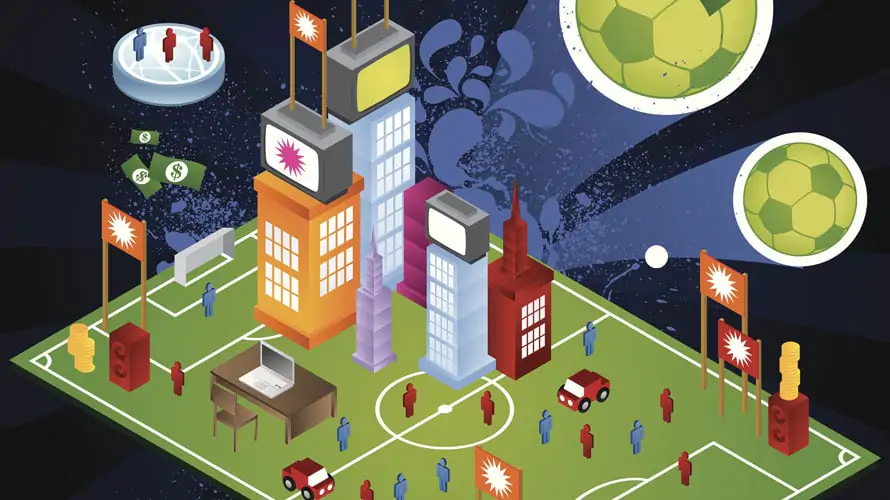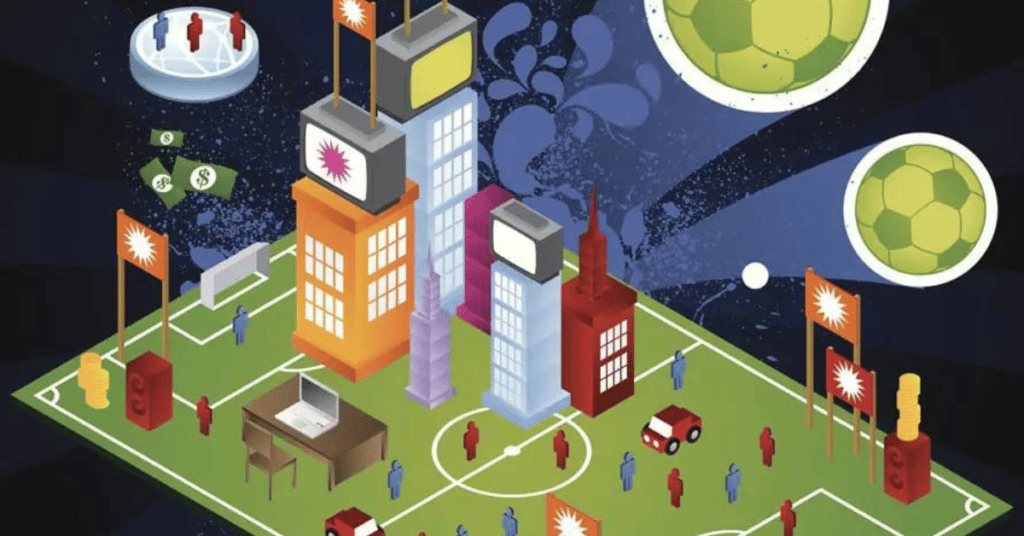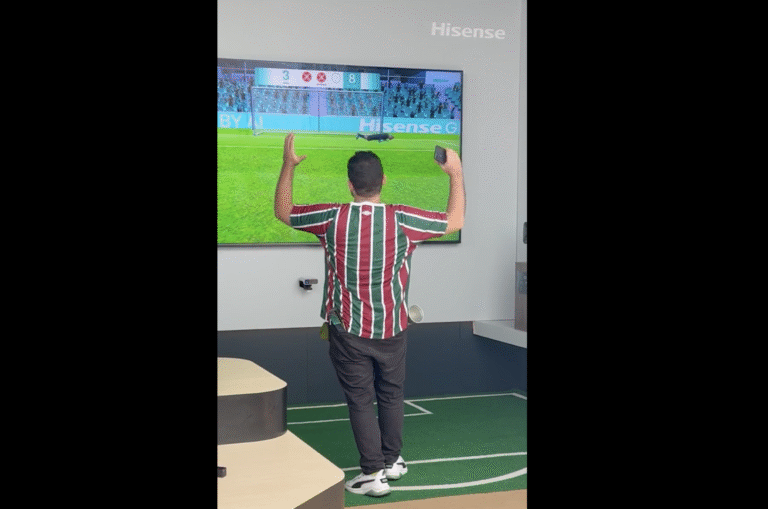
The days of the Jumbotron are long gone

The landscape of sports marketing and fan engagement is undergoing a major shift.
Traditionally speaking, the omniscient crown jewel of fan engagement has been defined as the jumbotron—and for good reason. Two hundred feet of bright, HD LED signage to engage 30,000–60,000 fans at once accomplishes what many marketers covet: scalable branding. However, the mighty jumbotron is no longer the unanimous sports marketing icon, as the average fan has evolved to demand more than a large viewable screen to capture their attention. The decline in dependence on the Jumbotron is emblematic of the much bigger evolution in fan engagement and sports marketing happening today.
Attendance lows are being recorded from the MLB to the NFL. Television ratings are also dipping. It would be easy to assume this is because the popularity of sports is declining, but in fact their popularity is growing globally, and younger generations are just as involved, if not more, than their predecessors. While millennials’ sacrilegious disregard for sports isn’t to blame, their short attention spans and the technology that’s causing this shrinkage across all demographics is.
For instance, more fans than ever are actually tuning in to watch games but they are watching fewer and shorter sessions than ever in recent history, hence the dip in ratings. With live score updates, highlight reels and online streaming just a click away, fans simply no longer have to endure hours of stop-and-go play to enjoy the game’s most exciting moments. Instead, they can check their Twitter feed, scroll through memes or sign up for push notifications.
“[Marketers] need to take cues from the emerging sports distribution channels that are making their piece of fan engagement pie smaller.”
With more content competing for their attention than ever, it’s only human nature that people become somewhat desensitized. Consumers are evolving to crave convenience and instant gratification, but paradoxically, they also pine for unique, meaningful and interactive experiences that cut through the noise. In the sports world, this can look like fantasy leagues, esports or even interacting with players on social media. For brand sponsors and sports properties to continue to be successful, they need to take cues from the emerging sports distribution channels that are making their piece of fan engagement pie smaller.
Sports Marketers Need to Embrace Technology
Sports marketers have to embrace the very technology that has rendered them ineffective in the short term. For instance, fans who follow teams and players on social media are also more than twice as likely to subscribe to premium sports packages as those who do not. While not shocking, it does reveal that player and team social media channels are effective in influencing fans. Speaking of influencers, players themselves could also play a huge role in engaging fans on social media, whether it be to tune in, stay tuned in longer or buy tickets to the game.
In fact, ticketing is another area that is ripe for innovation. AI is being incorporated in ticketing and concessions, and a number of properties have moved away from traditional hard tickets to mobile app-based solutions. RFID/traditional barcode scanning technology is being woven into the ticketing process, signaling a movement toward gameday becoming a completely cashless experience. Additionally, technology is now being woven into jerseys that will help sell merchandise by integrating team apps into the retail experience. By streamlining transactions and creating more engagement points, guests can cut down on the time they spend in line entering the venue as well as buying food or merchandise. More intuitive processes and less time waiting improve fan engagement and the entire gameday experience.
Since, realistically, rulebooks will not be rewritten to make games any shorter, sports properties need to take measures to enhance the experience according to changing consumer behavior. This is why sports stadiums across the country are morphing into high-tech microcities and entertainment centers. A huge opportunity lies in the concourse, where marketers can take advantage of underutilized space to install activations that foster brand connections and memorable fan experiences. The use of technology like AR and VR is encouraged here, as they provide an exciting and engaging way for brands to connect with fans while capturing key consumer data with modern audience measurement tools.
Photobooths, interactive games, virtual reality experiences, and social lounges are also popular installations that warrant real estate in the concourse. These types of activations can help bridge the gap between the typical sports fan and secondary spectators, who may not respond to the pure gameday experience itself. With the option of these immersive engagements, gameday can mean full family fun rather than dad’s day out. Moreover, these novelty experiences increase foot traffic at sports properties in terms of volume and length of stay by making stadiums more of a destination in themselves. One of the fringe benefits of this approach is that social media savvy fans are encouraged to post content to their personal social channels, which translates to free advertising.
By the same token, live sports distributors need to offer viewers something they couldn’t stream for free on the internet. Whether this means exclusive content, a higher-quality picture or even virtual reality remains to be seen. Perhaps this could present an opportunity for partnerships like those seen by content platforms growing through esports channels like Facebook or Twitch. This reality transcends the sports industry and has led to experimentation with technology to engage consumers in a number of areas, from robot greeters at retail locations to entertainers licensing their tour footage to Netflix.
Sports marketers, like the rest of marketers, are in the early phases of using technology to mitigate the perceived damage the internet has done to their traditional revenue streams. However, they will quickly learn from their mistakes and capitalize on opportunities thanks to the wealth of data that these technological solutions provide. Sure, distribution channels have been disrupted, and yes, consumer behavior will continue to change. Luckily, this disruption means more possibilities and even more tools to help navigate the future of fan engagement.





